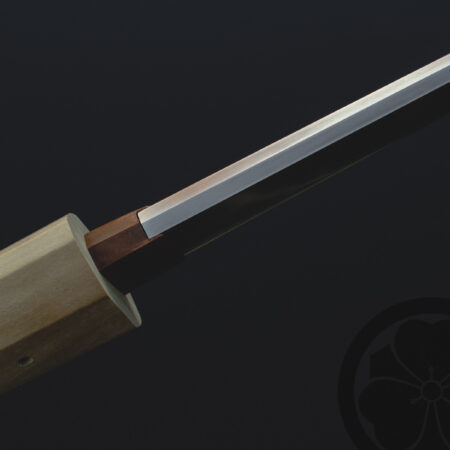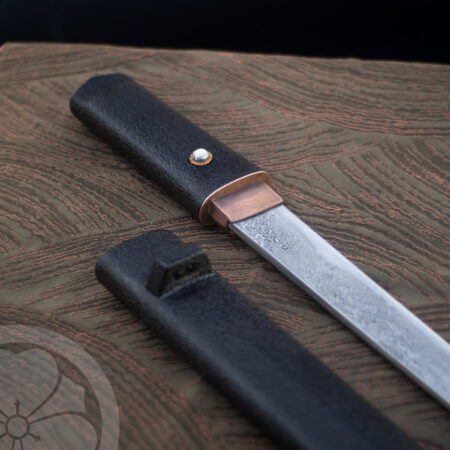Description
Touzai (東西) can be literally translated “East West” and carries the idea of spanning across distance or covering and including everywhere. There is also a saying, “kokontouzai” (古今東西) which means for all time and all places, literally “old, now, East, West”. This project began with the concept of ideas from different times and places coming together in a specific way.
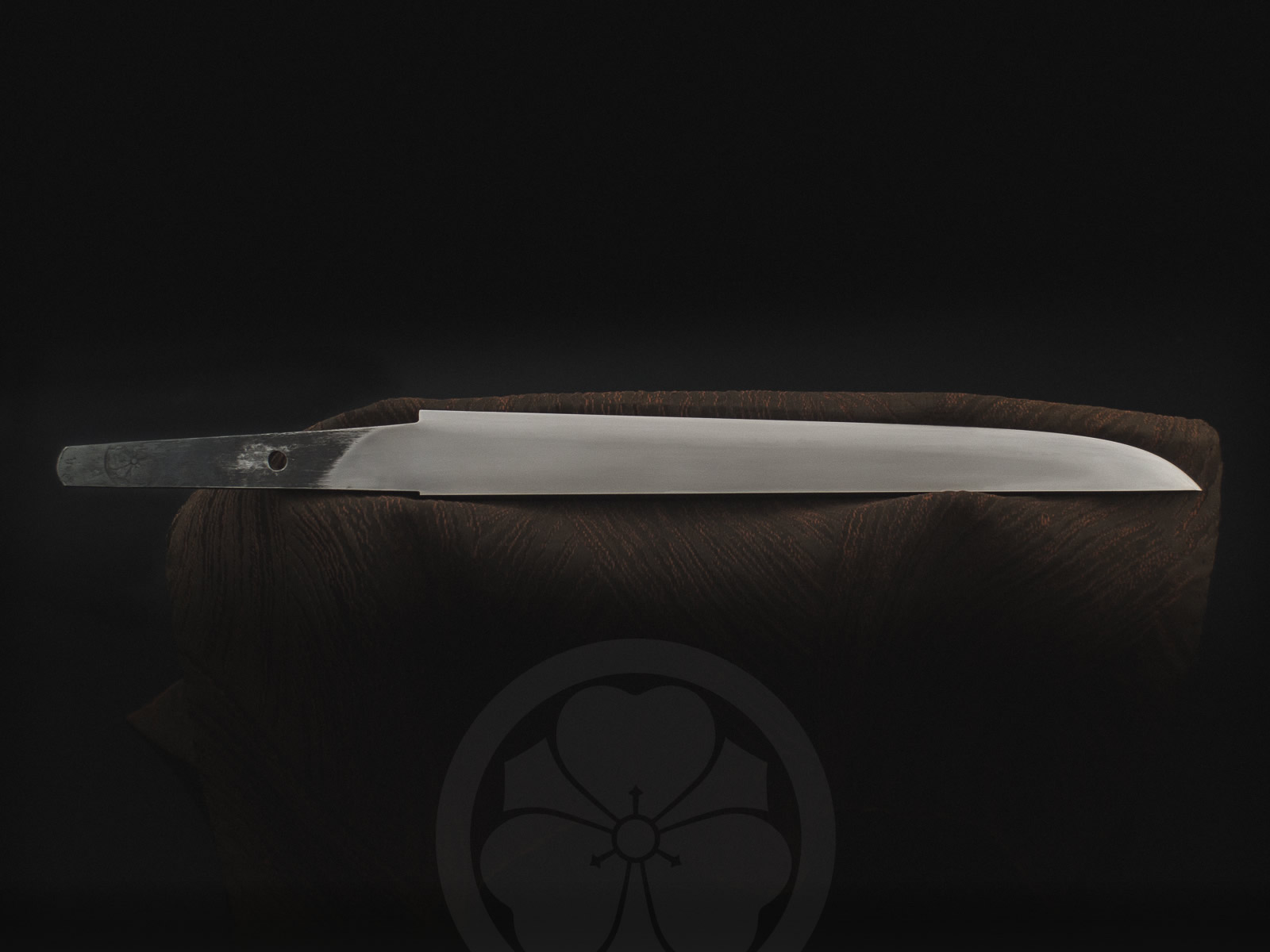
Though this piece is a classical tanto in most respects, there are some elements that reflect a more antique western aesthetic. The seed that began this project was the question of what would result if a historical Japanese knife maker working at a time when exposure to the west was very limited was asked to create a western style knife based only on a description.
The resulting piece retains the lines and techniques that would have been familiar to the maker, but incorporates the more obvious elements of the foreign style which would have been transmitted in the description. The wide guard and hardwood handle would have been immediately recognizable to a western traveler, but the construction of the scabbard and other fittings are quite eastern. In viewing the final work, it seems that this particular fusion of eras and origins have unintentionally captured many of the influences traditionally associated with the steampunk genre.
When we attempt to adapt a new style or design that is foreign to us, we tend to work from our own frame of reference, relying heavily on what we know as a foundation. The most obvious elements that differ from the familiar are the ones that tend to get emphasized and filtered through our own paradigm, often to the point of caricature. Similar to examples of pre-photographic illustrations of strange new animals from other lands, the interpretation is sometimes quite unlike the actual subject.
The raw material for this blade spent more than the last century as a leaf spring for a horse-drawn carriage. It is somewhat unusual to come across this type of steel and is a rare find. It appears to be a type of steel called “shear steel”, predating mass-produced crucible steel and the Bessemer process. The source pile is located on the former homestead of a blacksmith so it has a high proportion of carbon steel, saved for its value and usefulness in making tools and implements.
The blade was hand forged in a charcoal fire, shaped with files, differentially hardened using traditional water quench yaki-ire, and polished by hand with water stones to reveal an active suguha hamon with a deep turn back.
The kataki style handle was carved from Sapele wood and finished with several thin layers of fukiurushi/suriurushi to bring out the warmth and grain of the wood. The guard was forged from an iron spike salvaged from the sea and shows a wood grain like surface pattern. All other fittings were forged from reclaimed copper and given a traditional patina and ibota wax finish.
Local Nootka Cypress forms the core for the scabbard, and a sabi-nuri (rust texture) style stone texture surface created with natural urushi lacquer and dried tea leaves gives a rusty iron appearance to the scabbard. A bamboo peg holds all components of the tanto together and allows for disassembly to clean and polish the blade.
Blade construction is muku with a hira-zukuri profile and iori mune. The blade is approximately 9.25″ long, overall length is around 14.5″, and the overall length when sheathed is about 17″. Accompanied by a hand stitched reclaimed silk obi storage bag.
Specifications
長さ/刃長 Nagasa: 7 sun 7 bu 6 rin (235mm)
元幅 Motohaba: 8 bu 6 rin (26mm)
重ね/元重 Motokasane: 2 bu 5 rin (7.75mm)
反り Sori: uchizori
中心/茎 Nakago: 3 sun 6 bu 4 rin (110mm)
柄長 Tsuka: 3 sun 5 bu 7 rin (108mm)
拵全長 Koshirae: 14 sun 2 bu 5 rin (432mm)
形 Katachi: hira-zukuri, iori-mune
刃文 Hamon: suguha, bo-utsuri
帽子/鋩子 Boshi: ko-maru, nijuba
中心/茎 Nakago: futsu, kuri-jiri, one mekugi-ana, signed near the tip
銘 Mei: hot stamped katabami-ken kamon
拵 Koshirae: chisagatana, issaku
Materials: Century-old spring steel, wrought iron from the sea, reclaimed copper bus bar, lightning rod, and waterpipe, Sapele, Nootka Cypress, leather, bamboo, tea leaves, natural urushi lacquer, rice paste glue
This piece is in a private collection in South Africa.
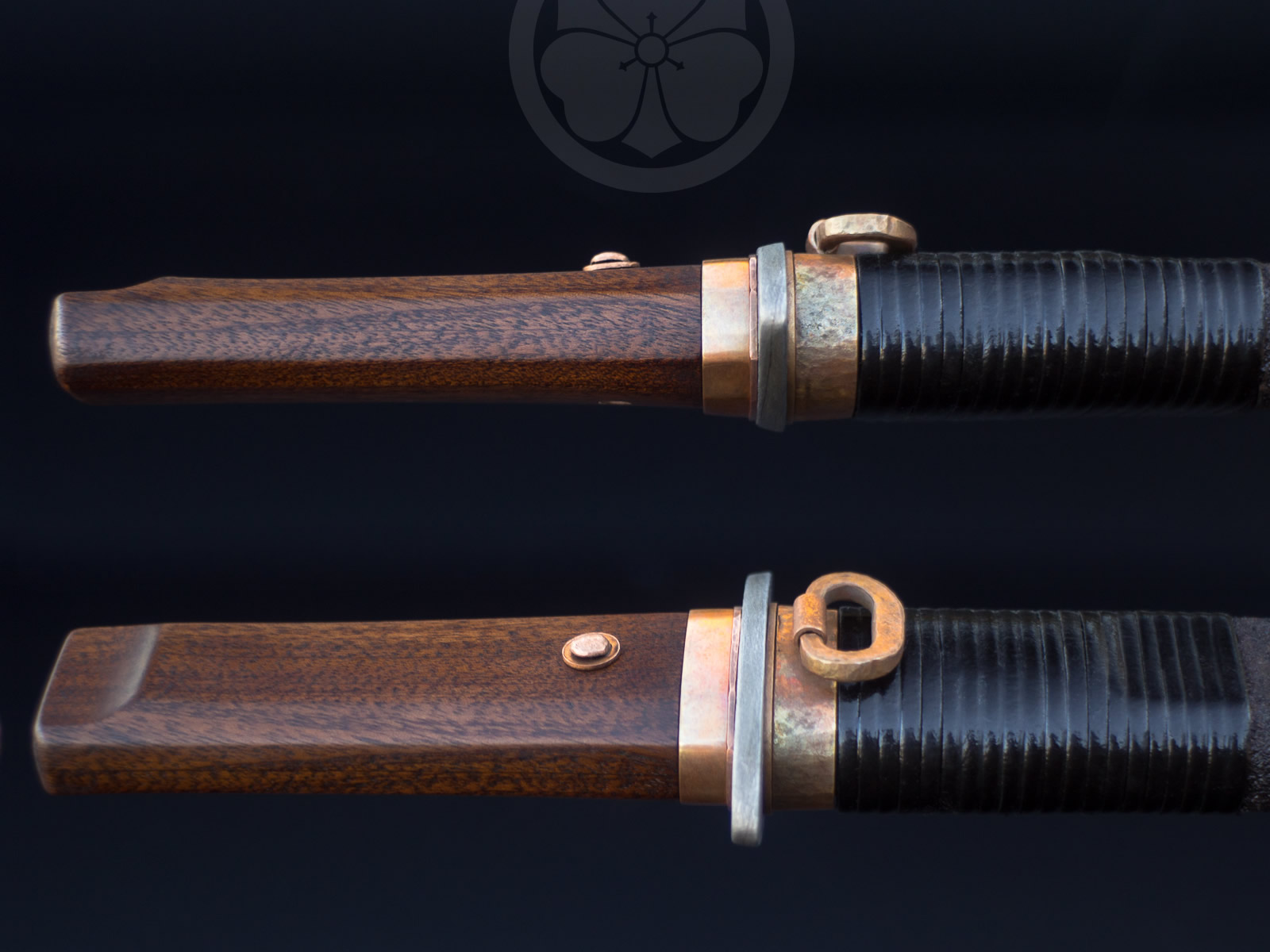
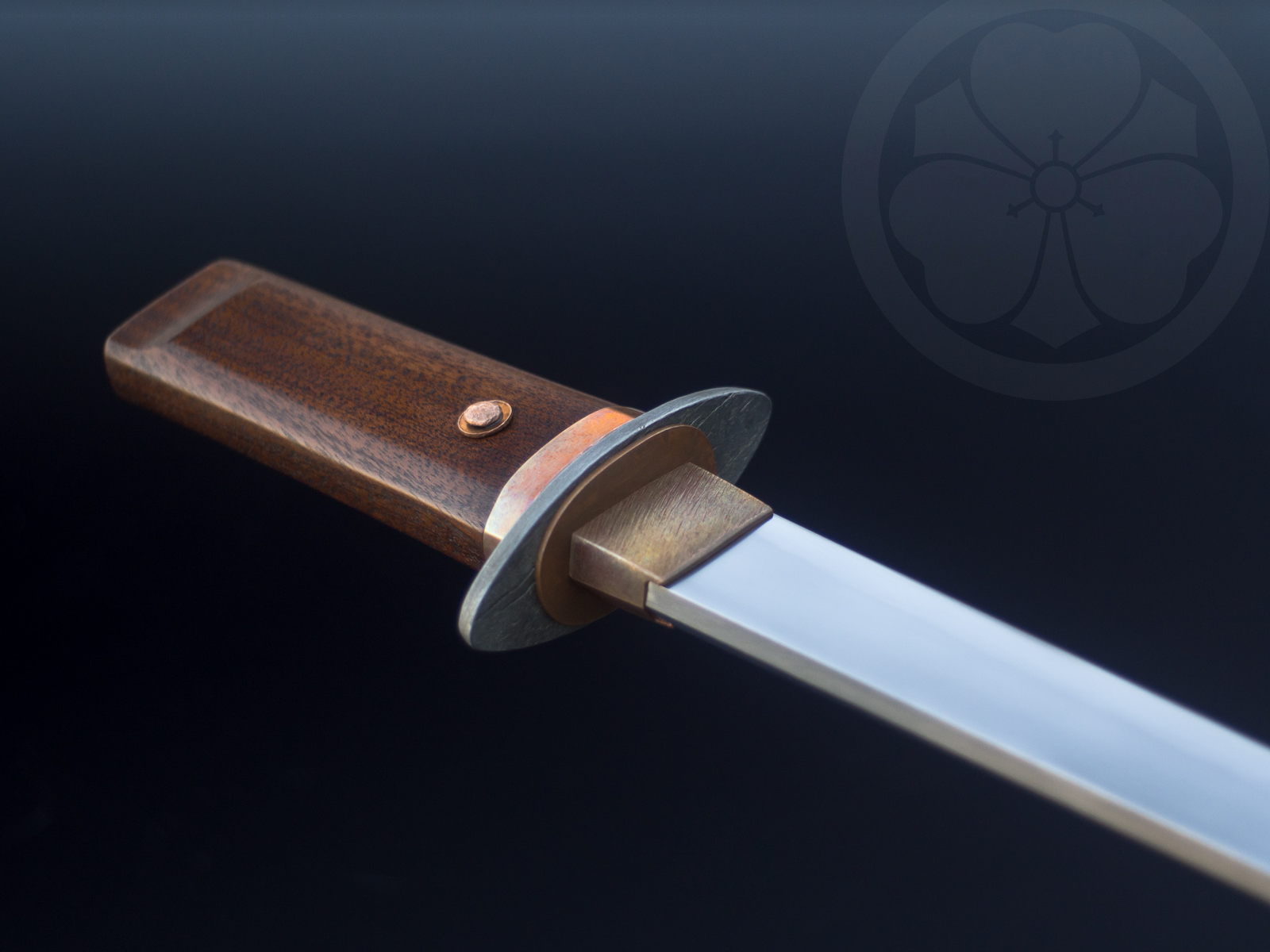
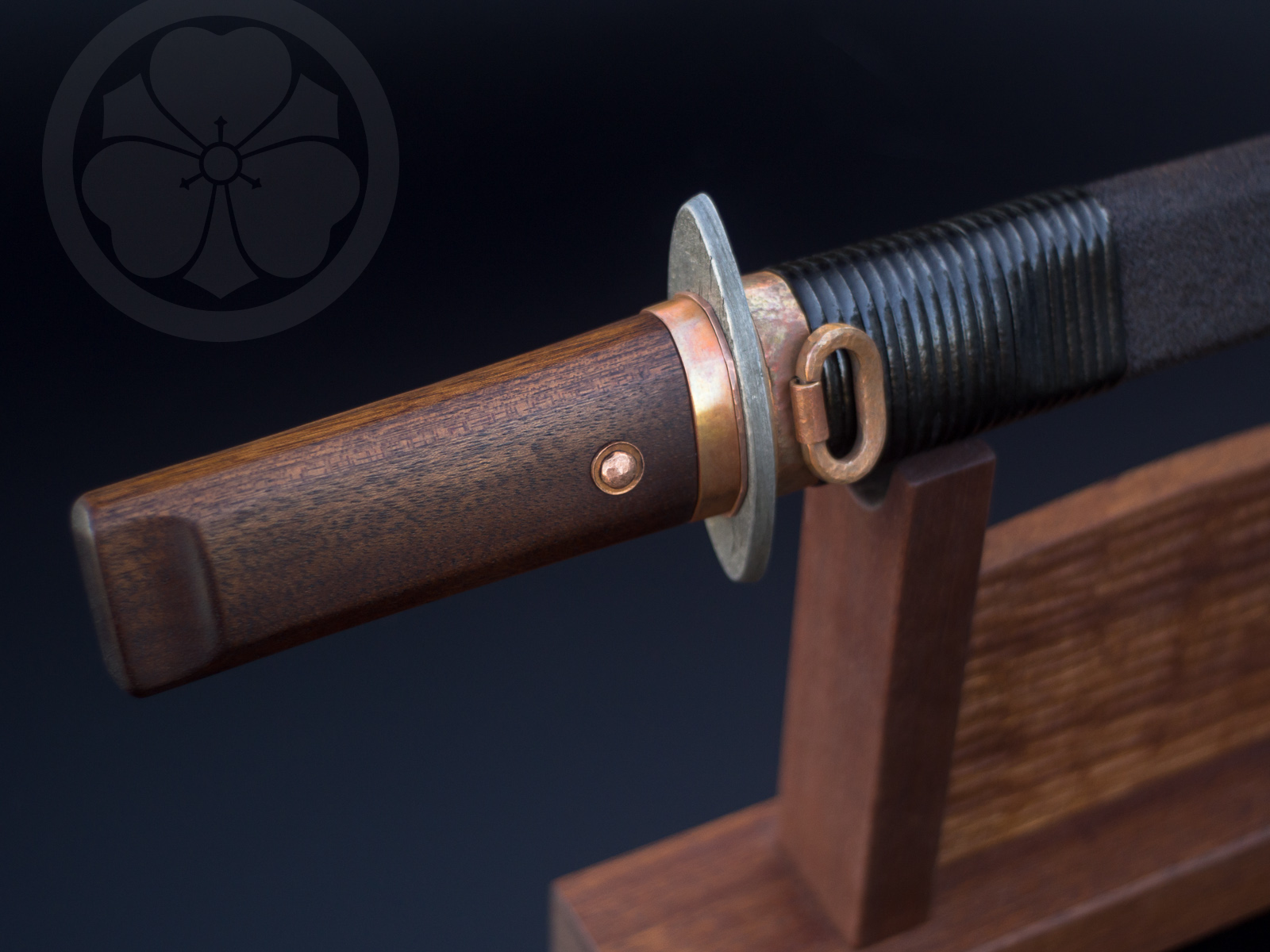
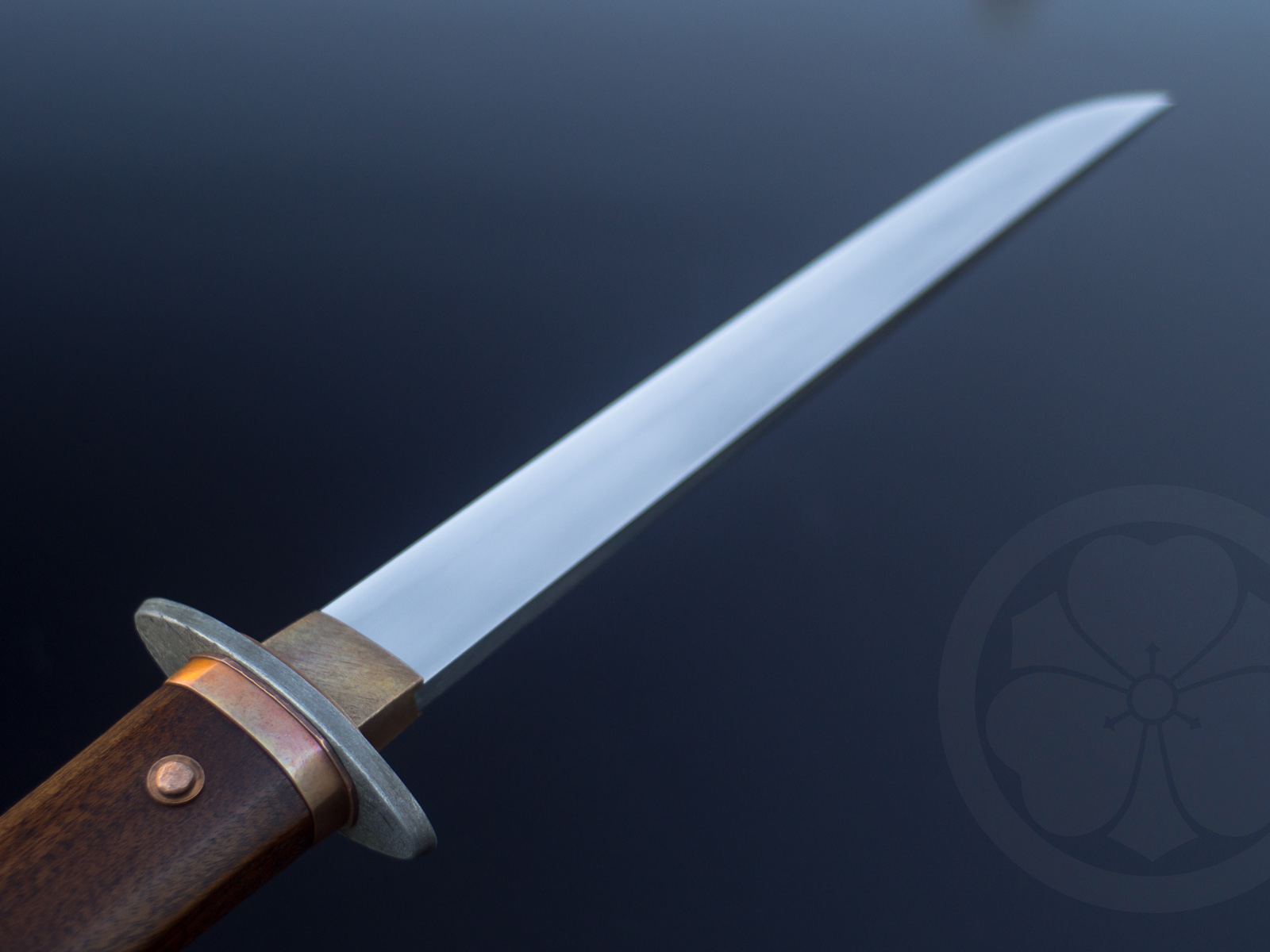
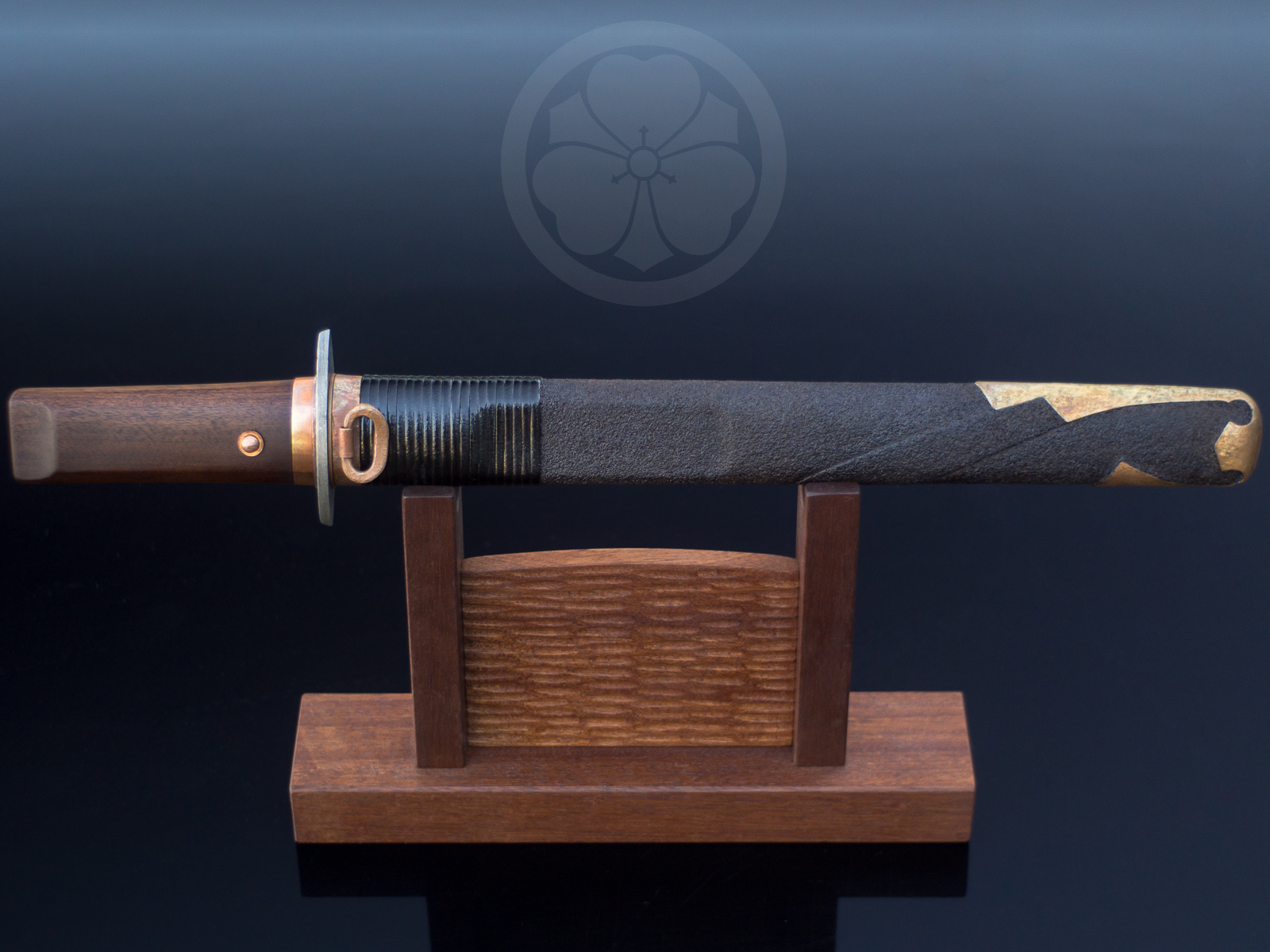
Process: Making the Touzai Tanto
See a more detailed account of making of this piece here: Touzai Tanto
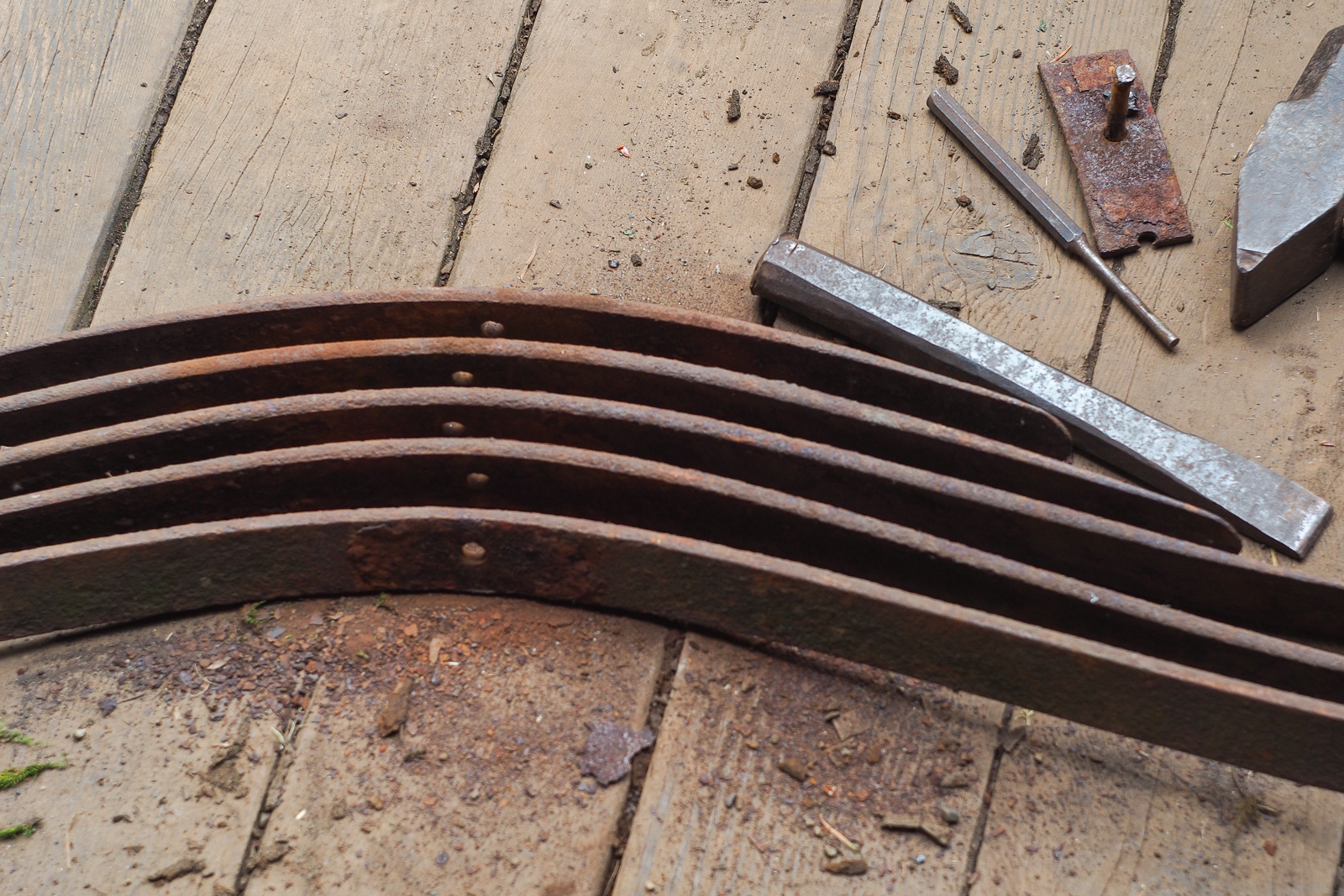
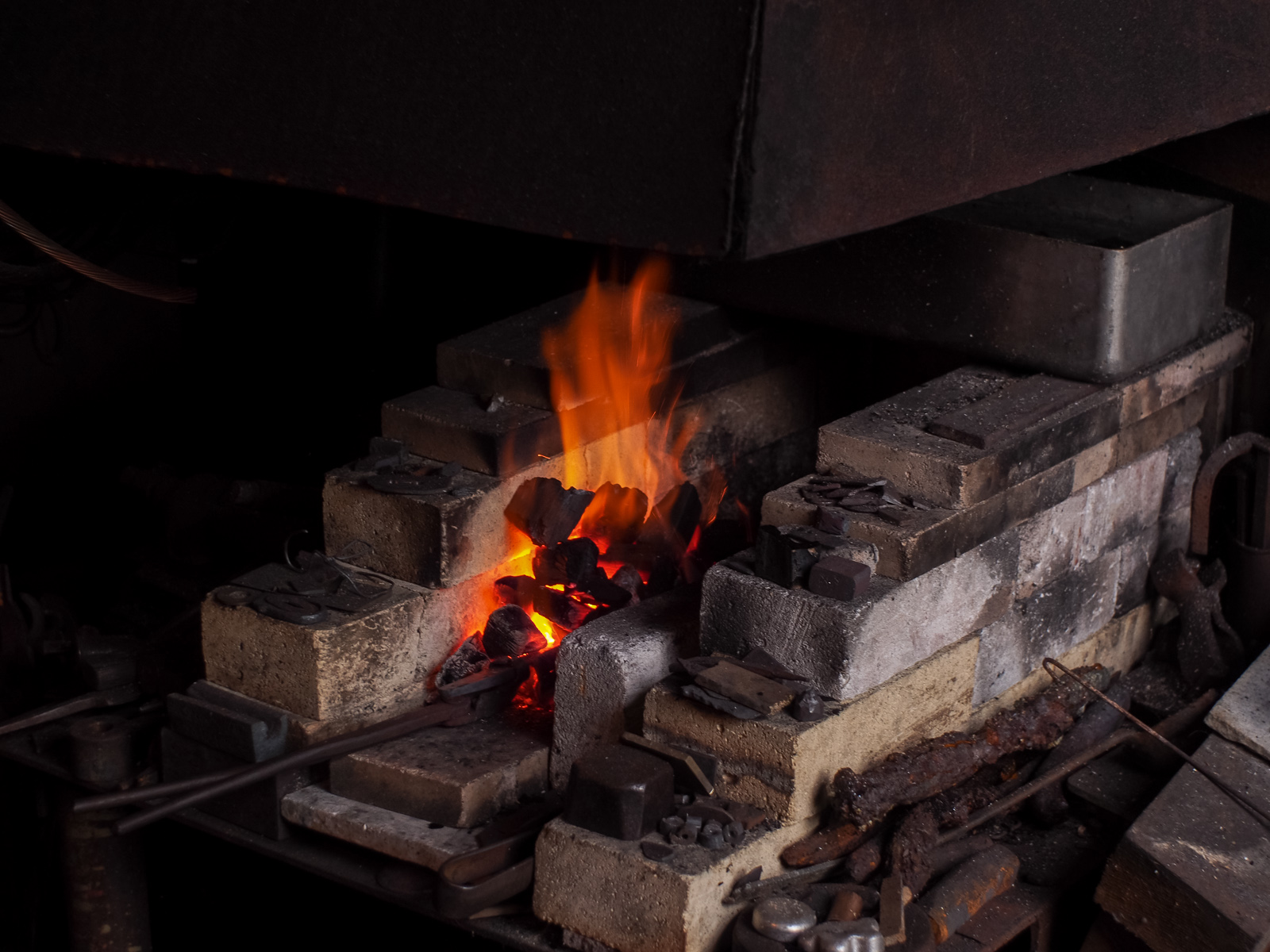
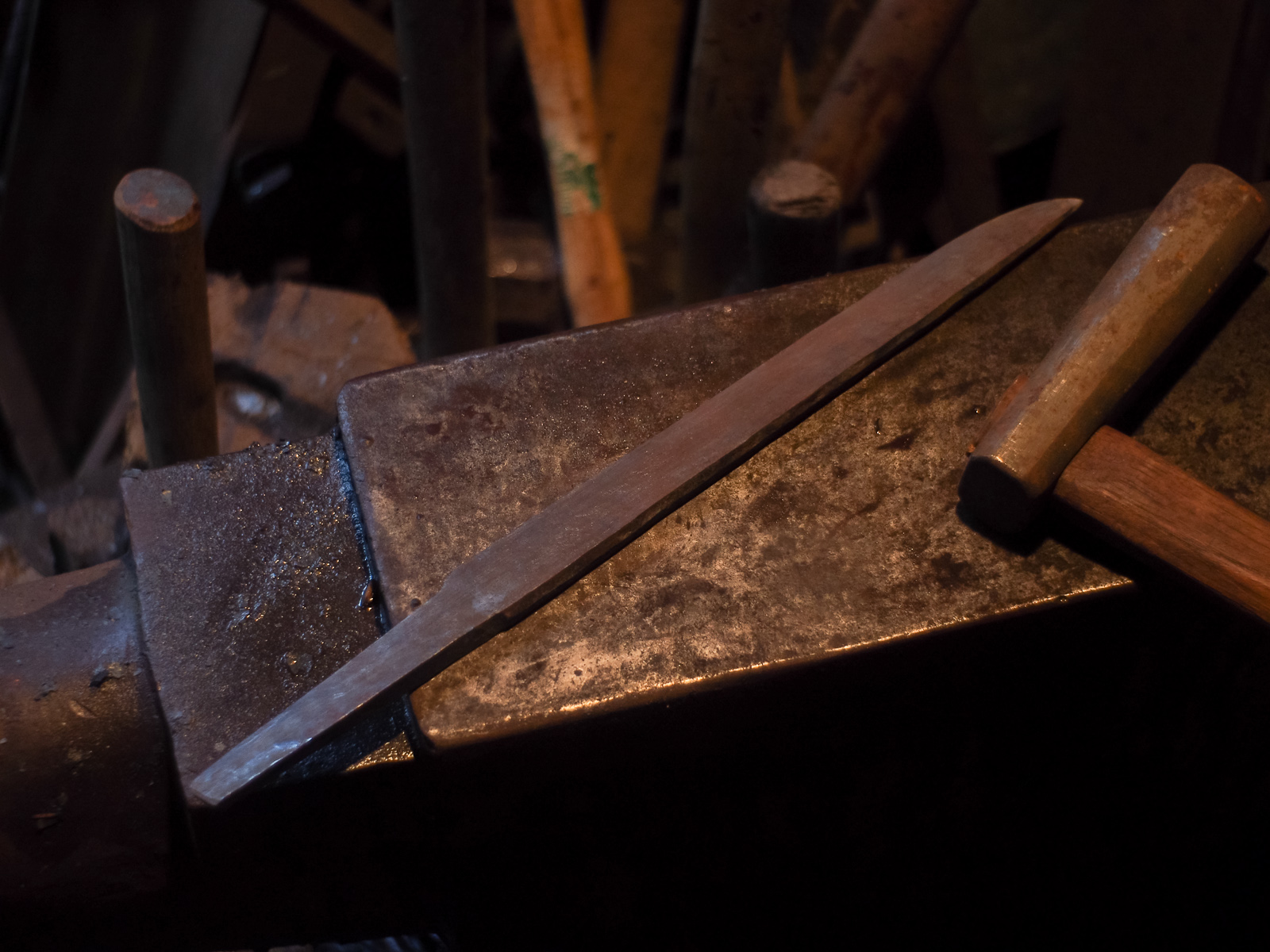
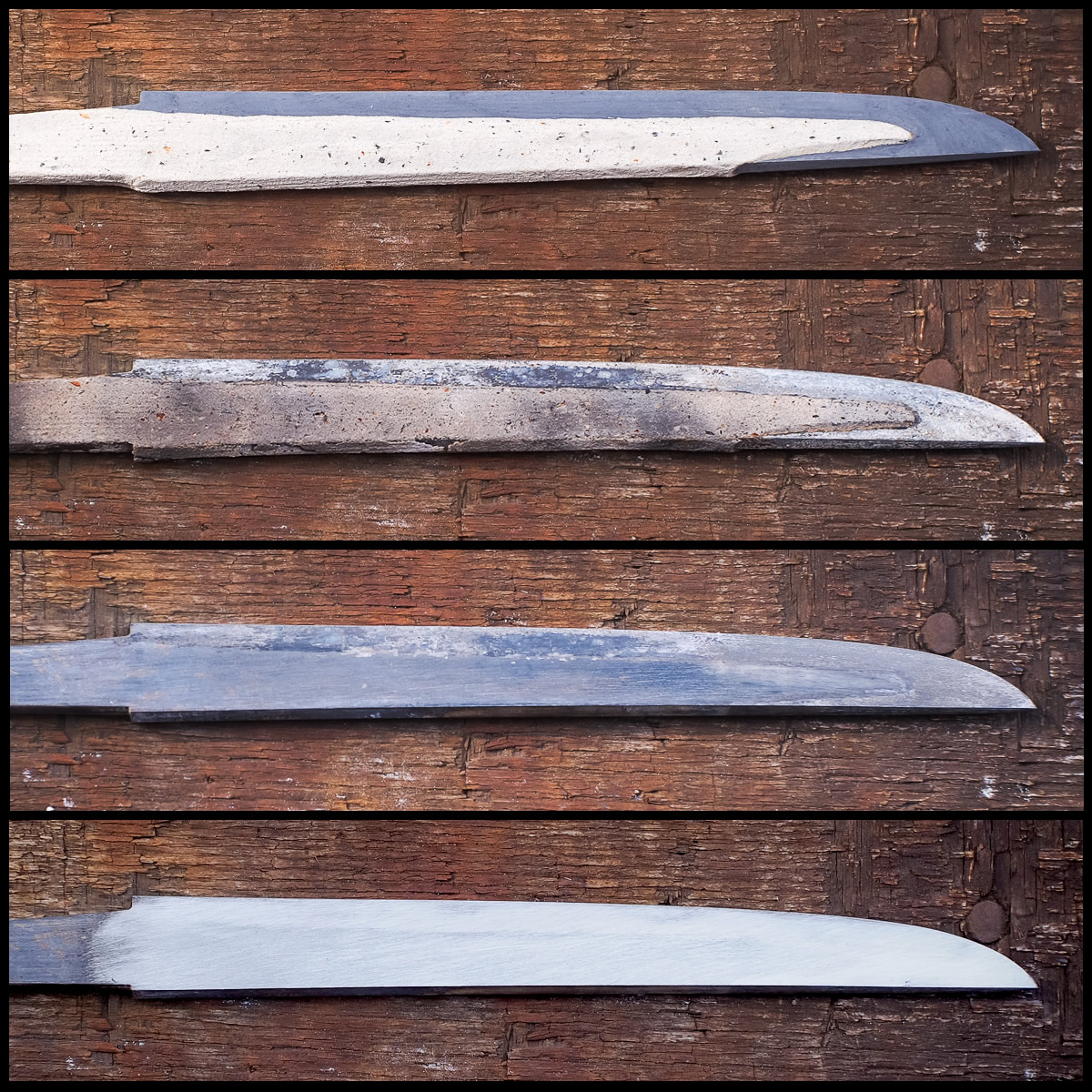
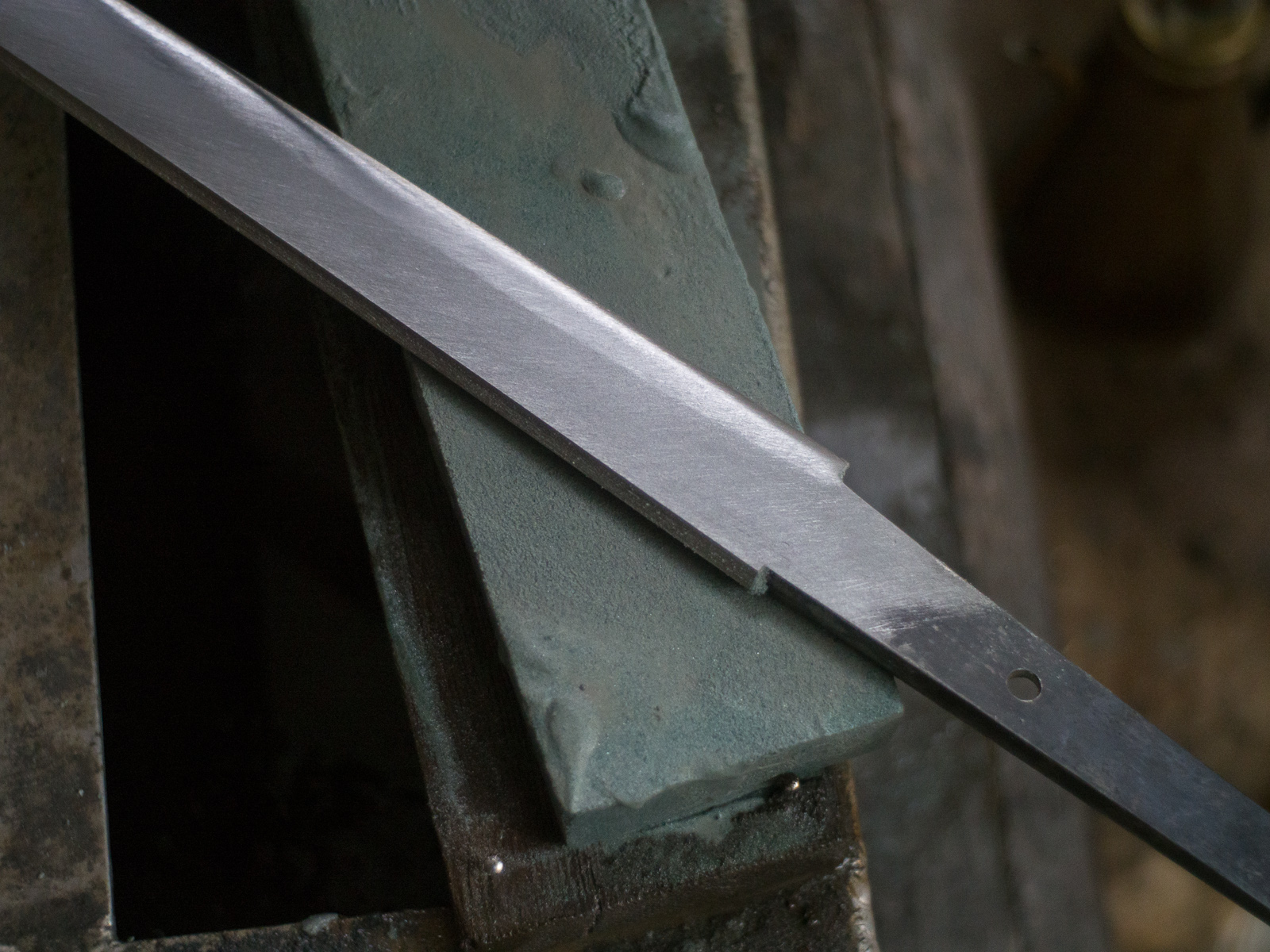
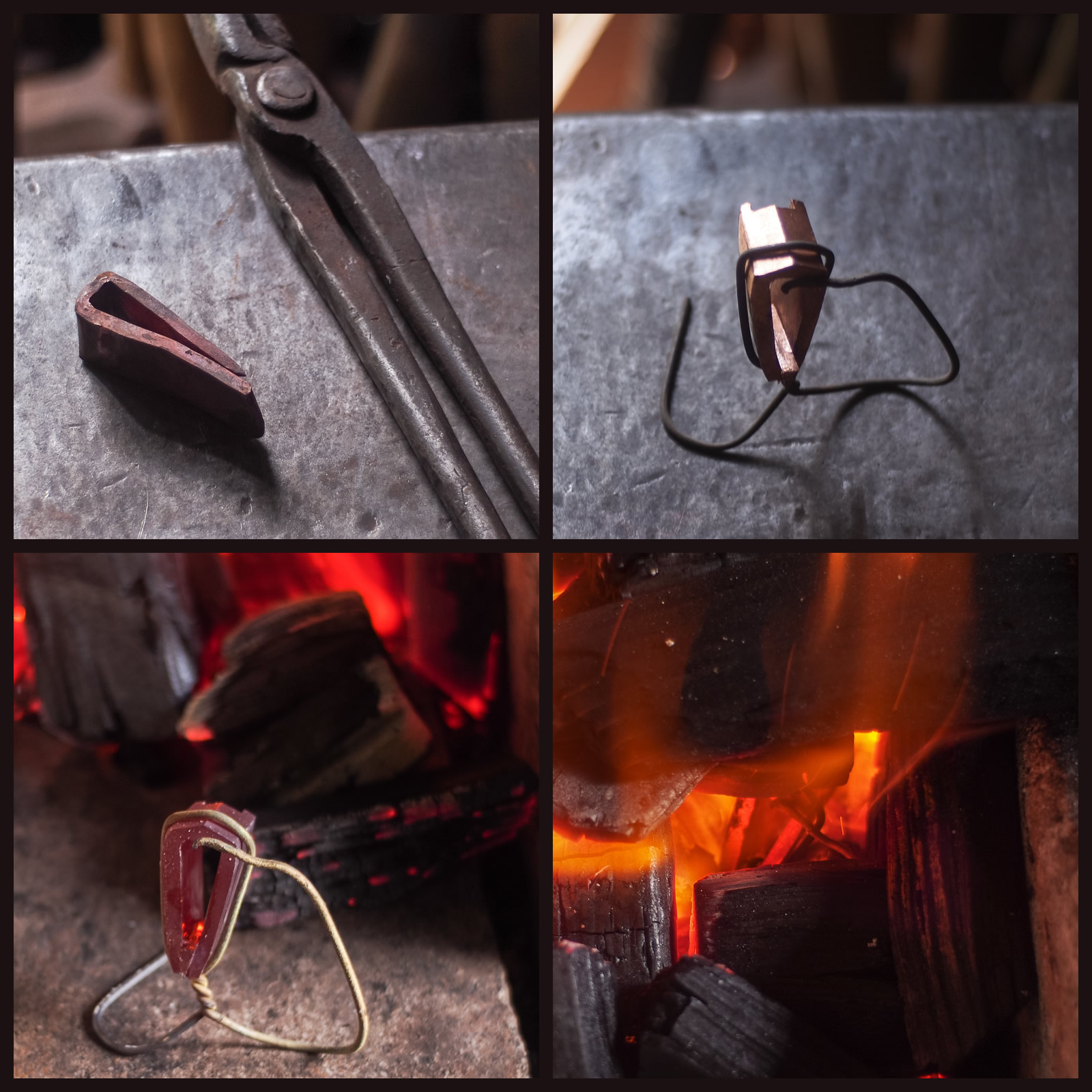
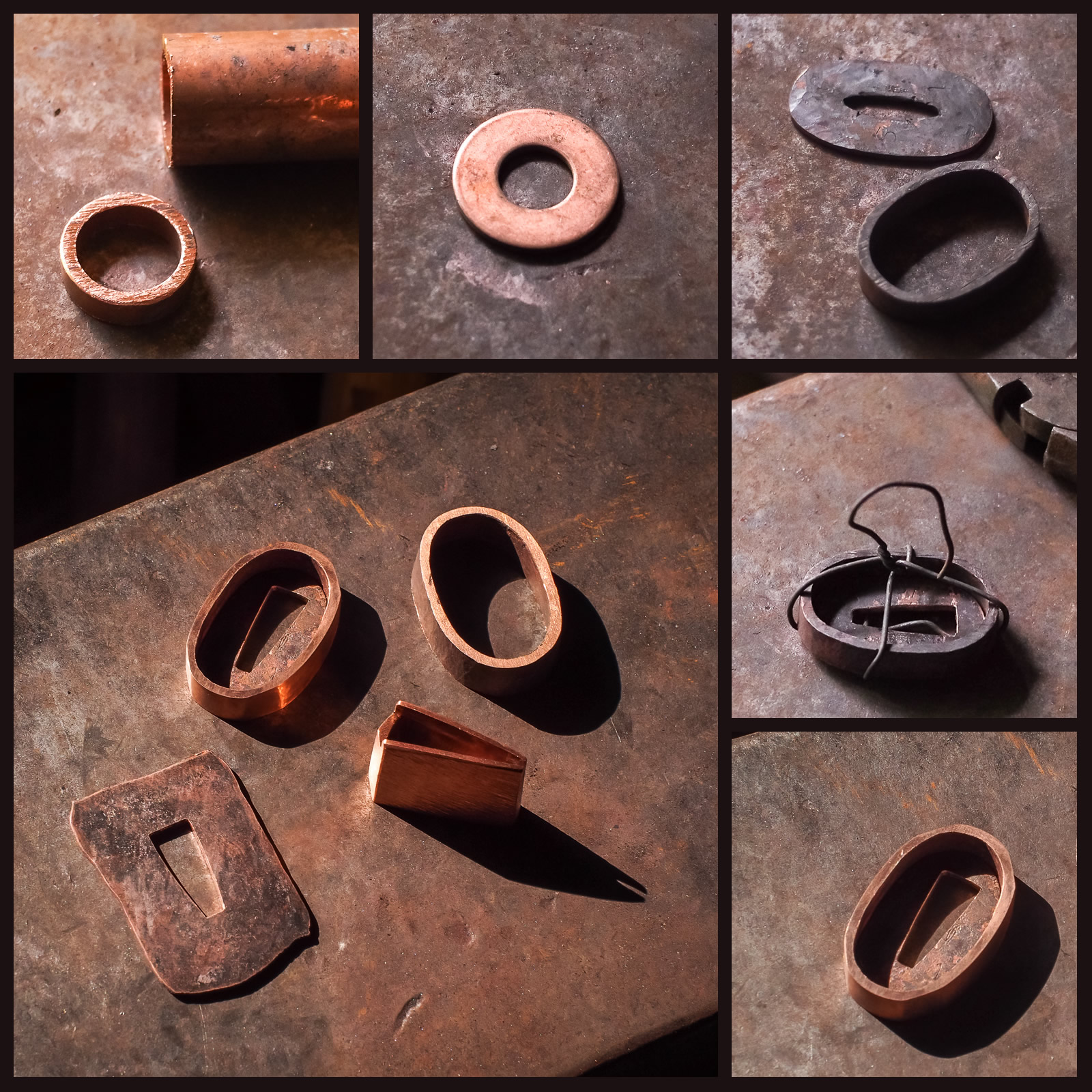
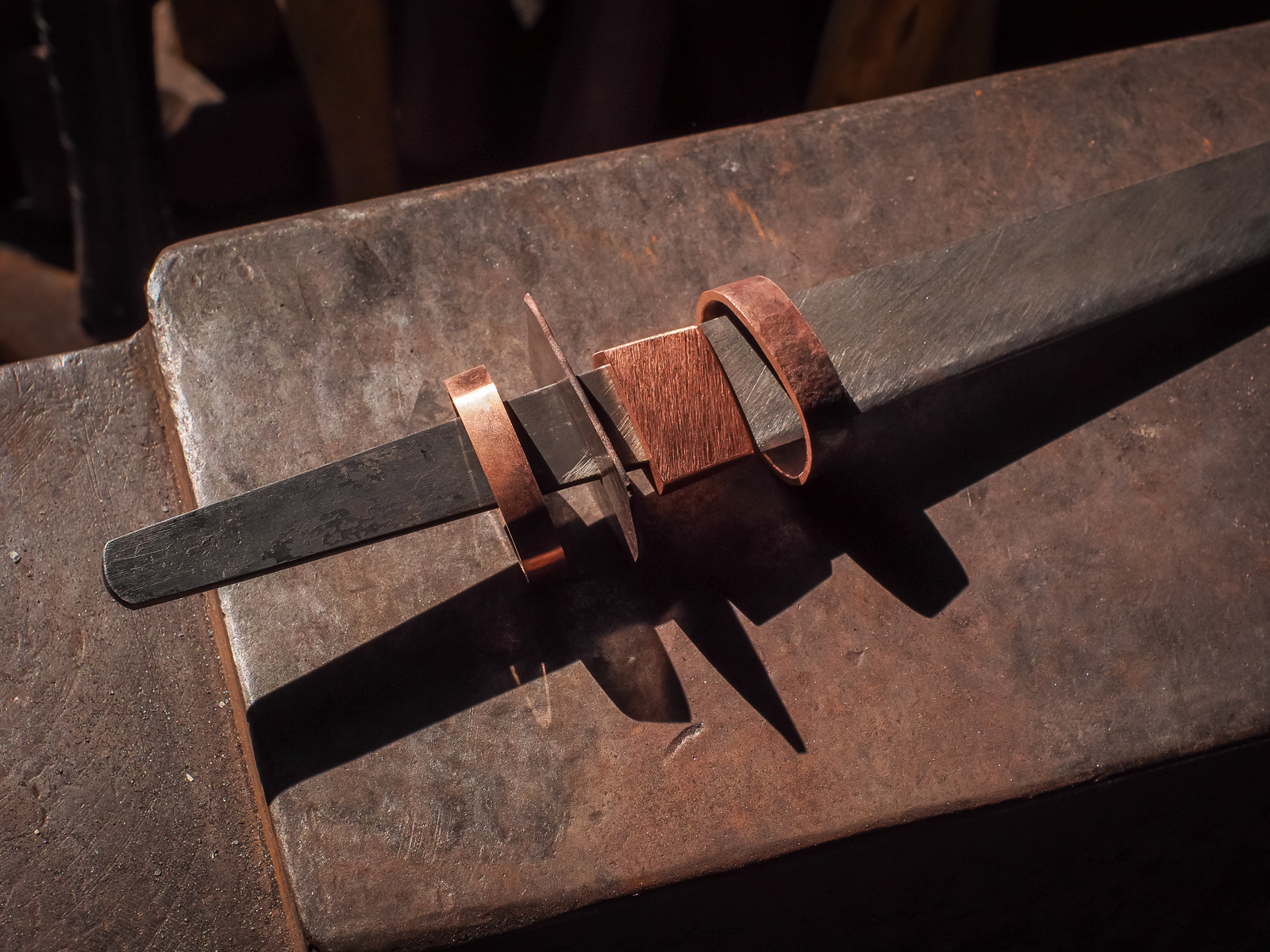
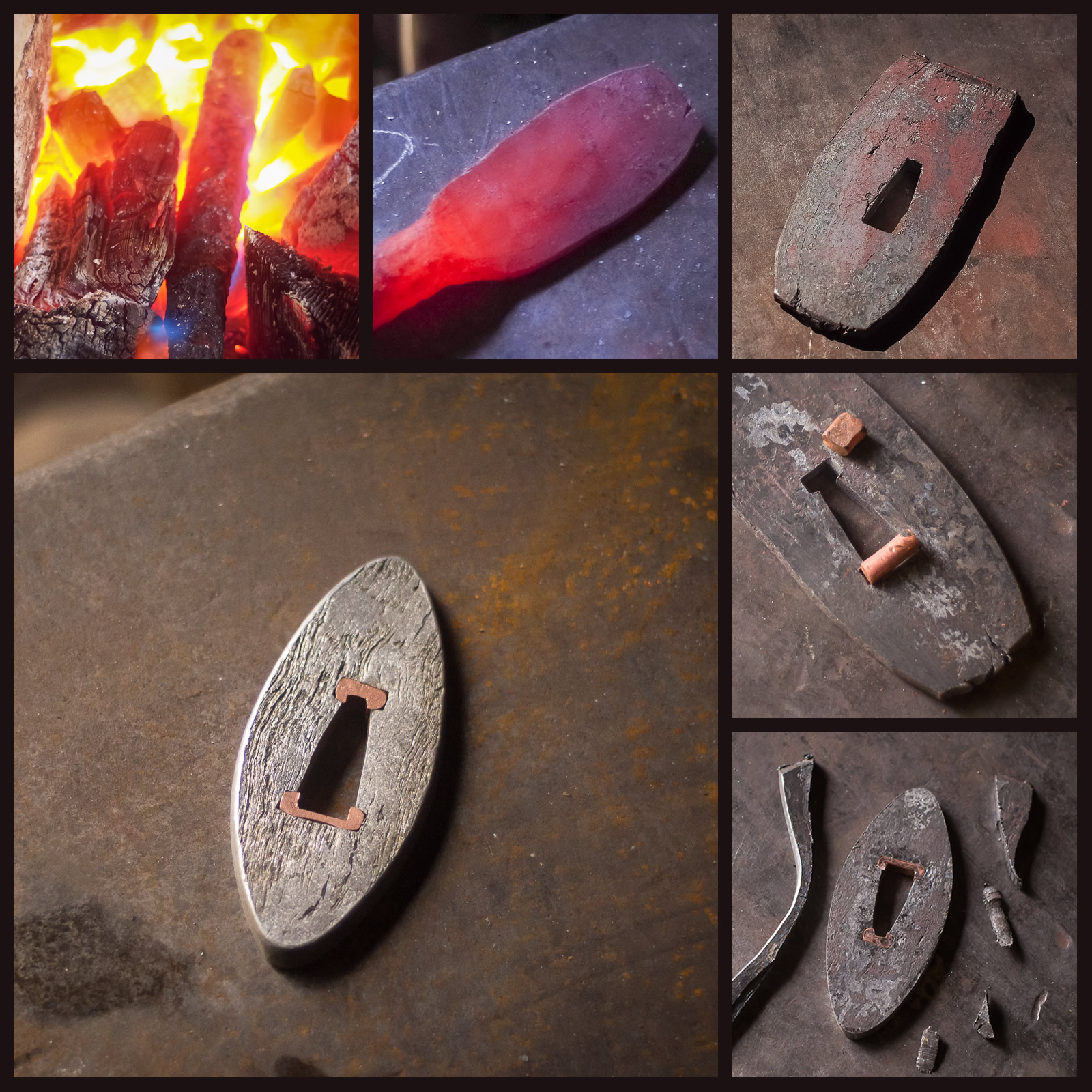
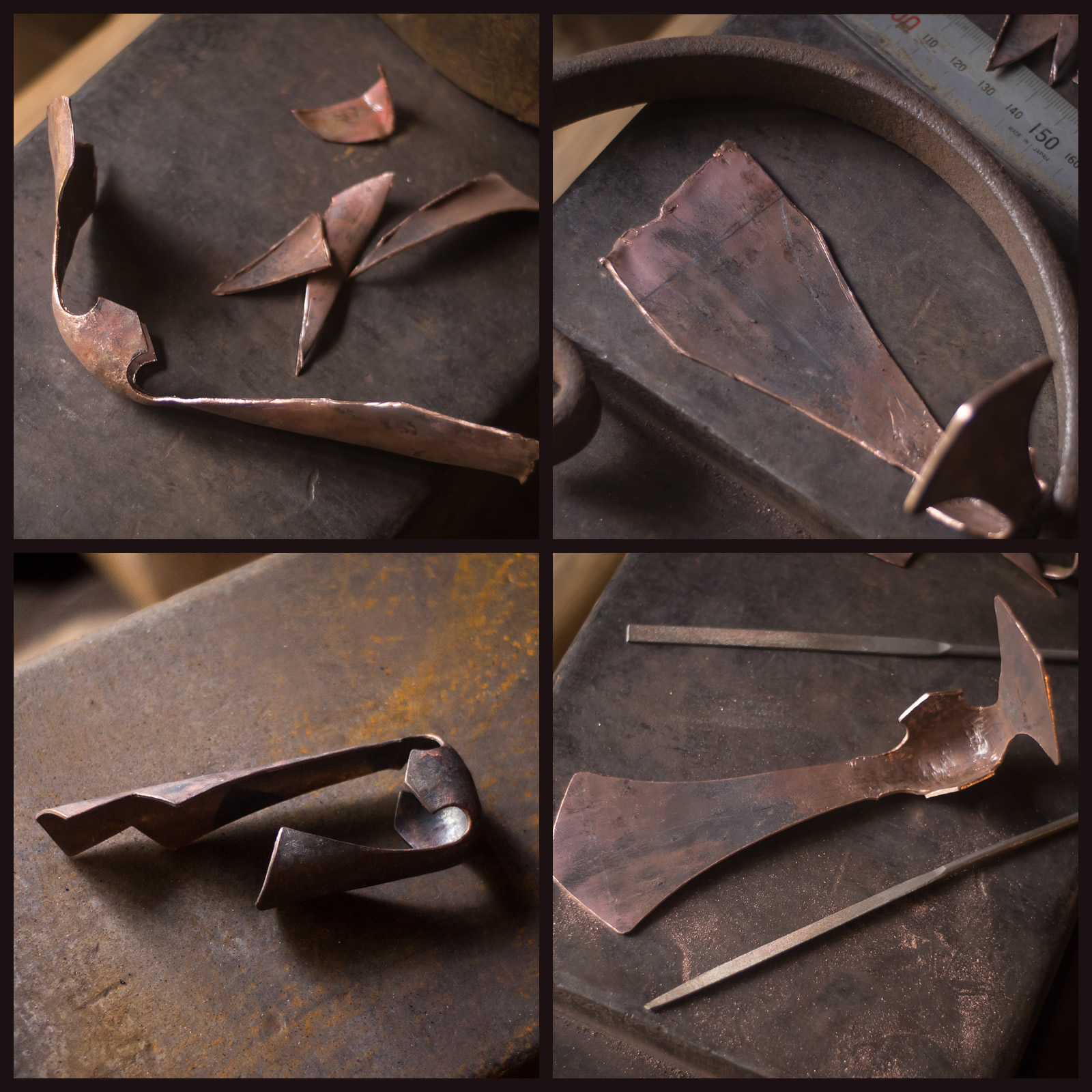
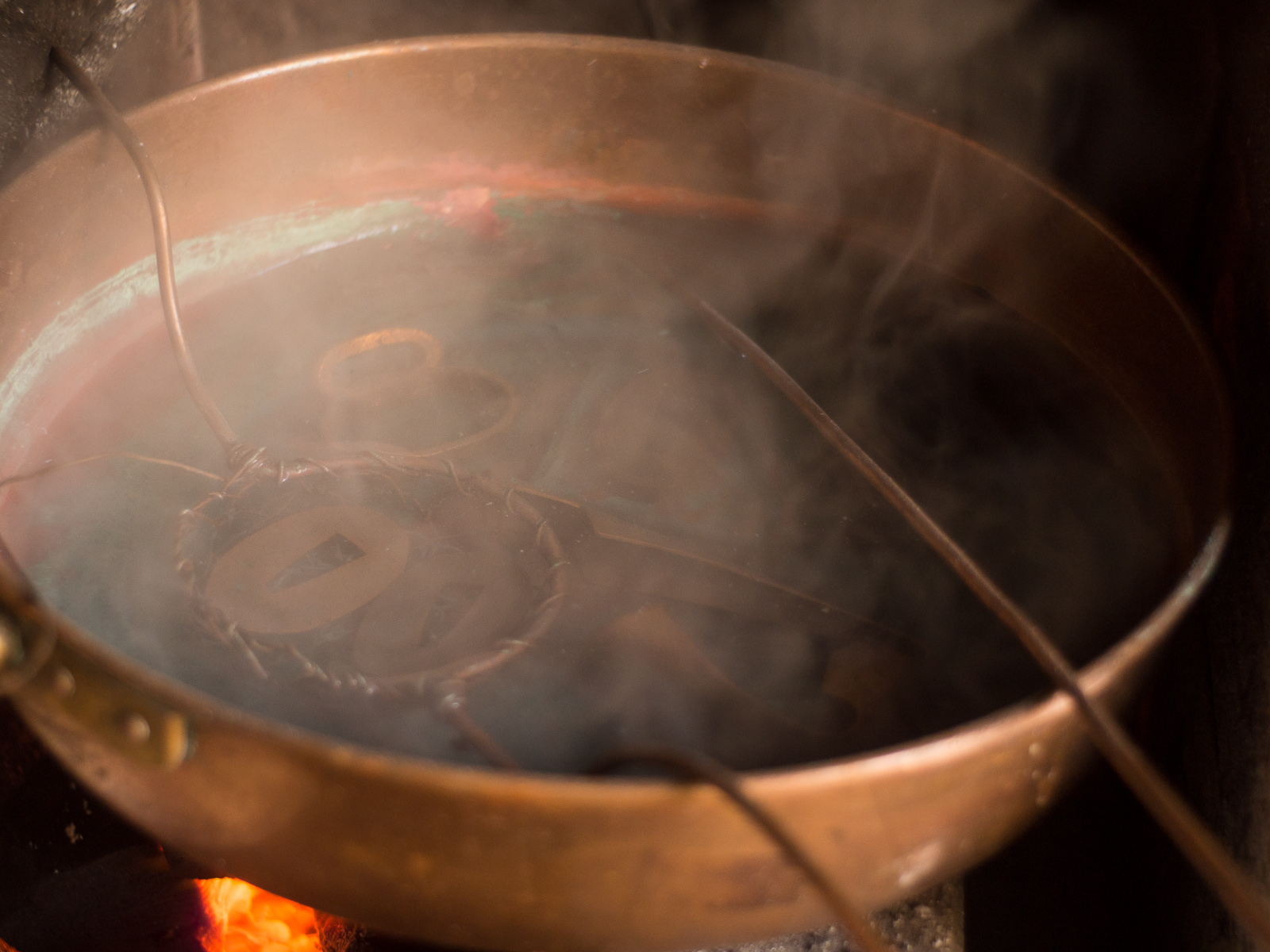
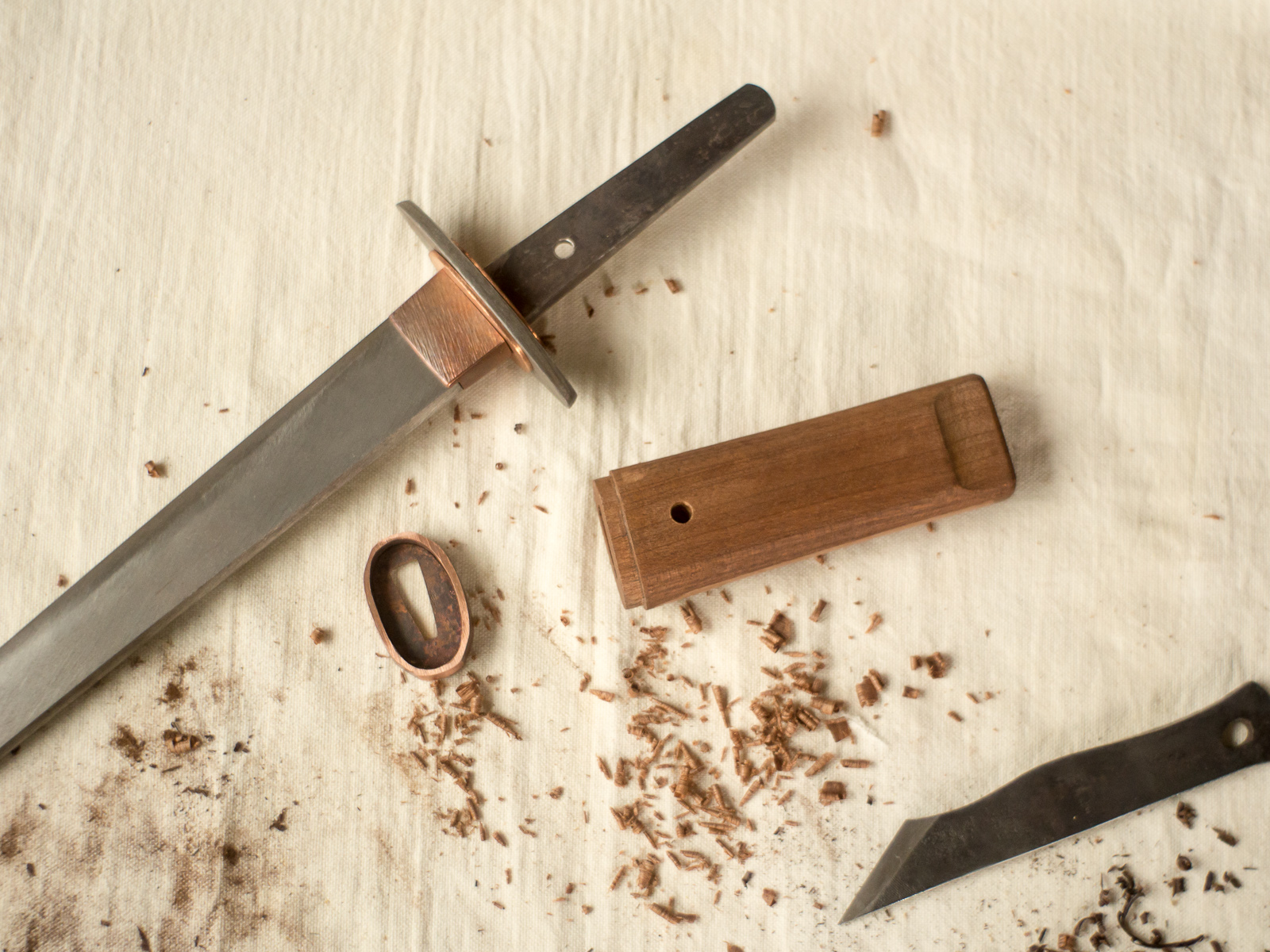
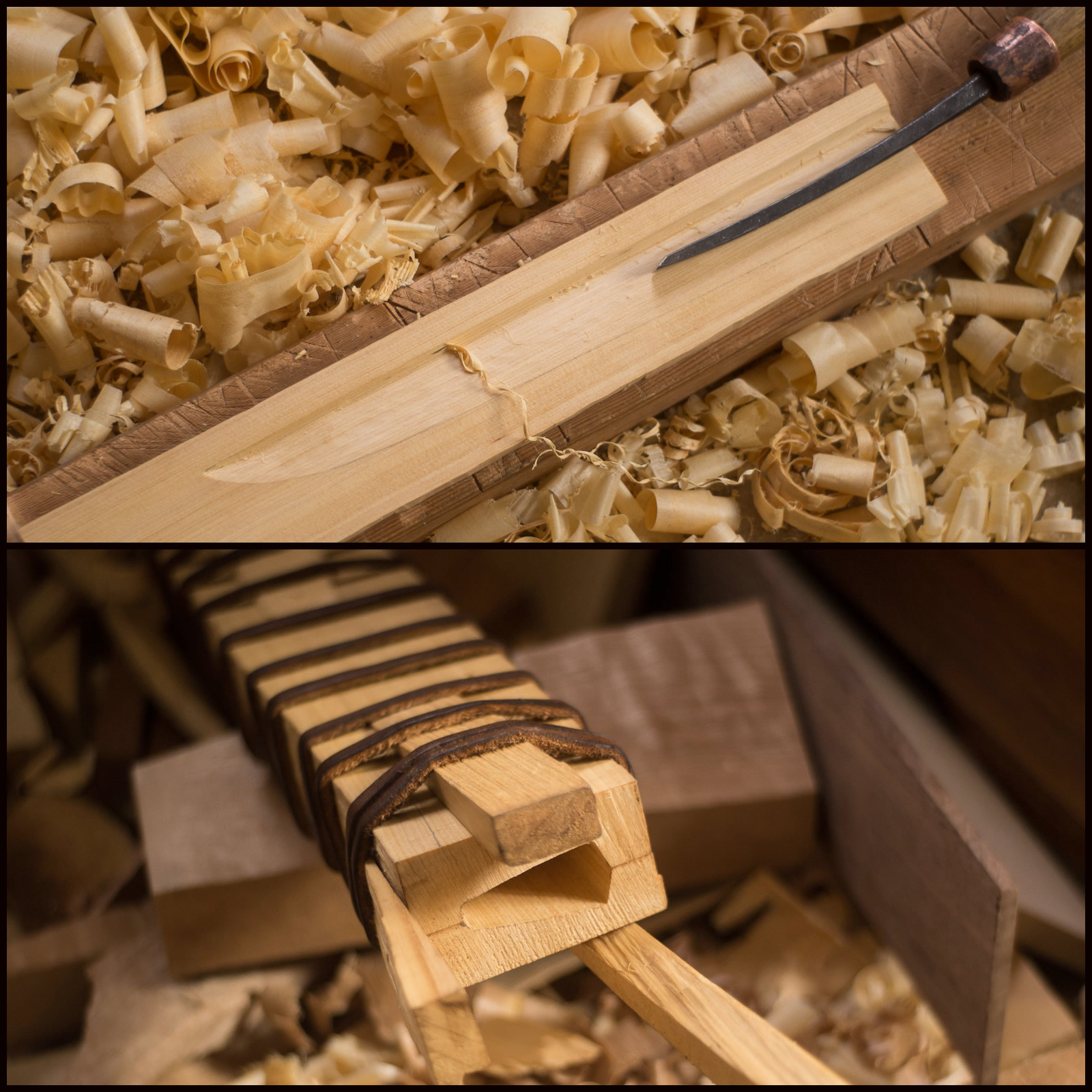
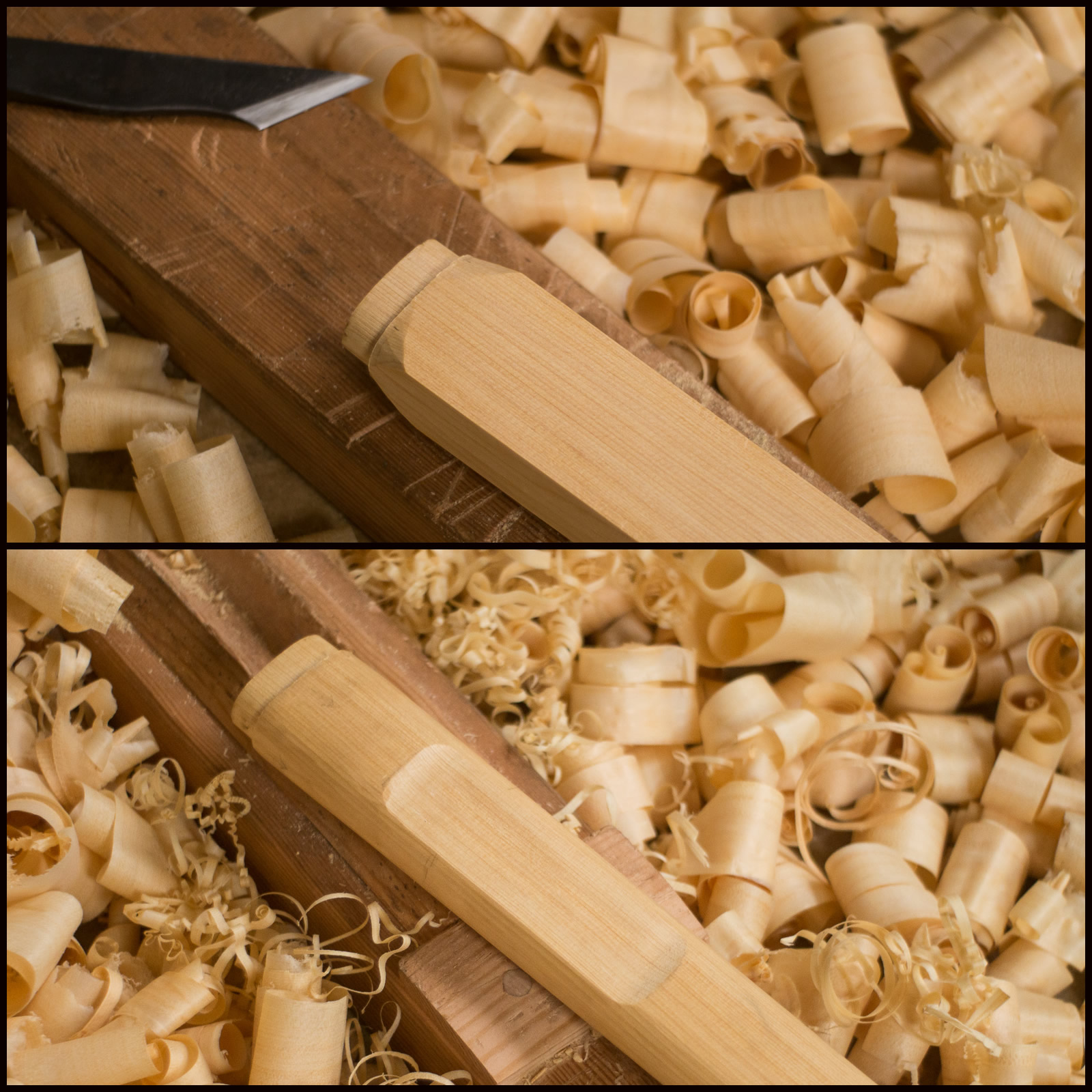
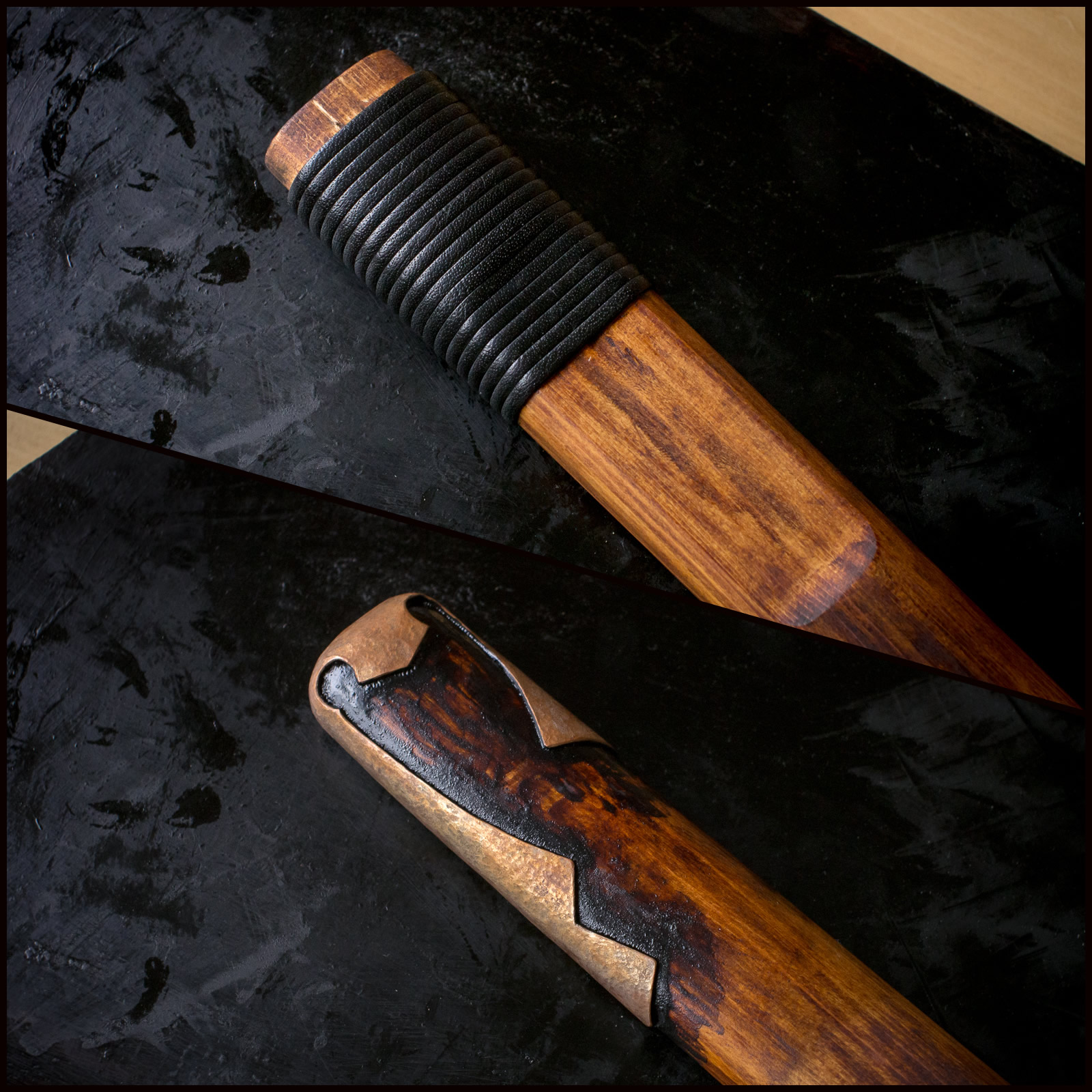
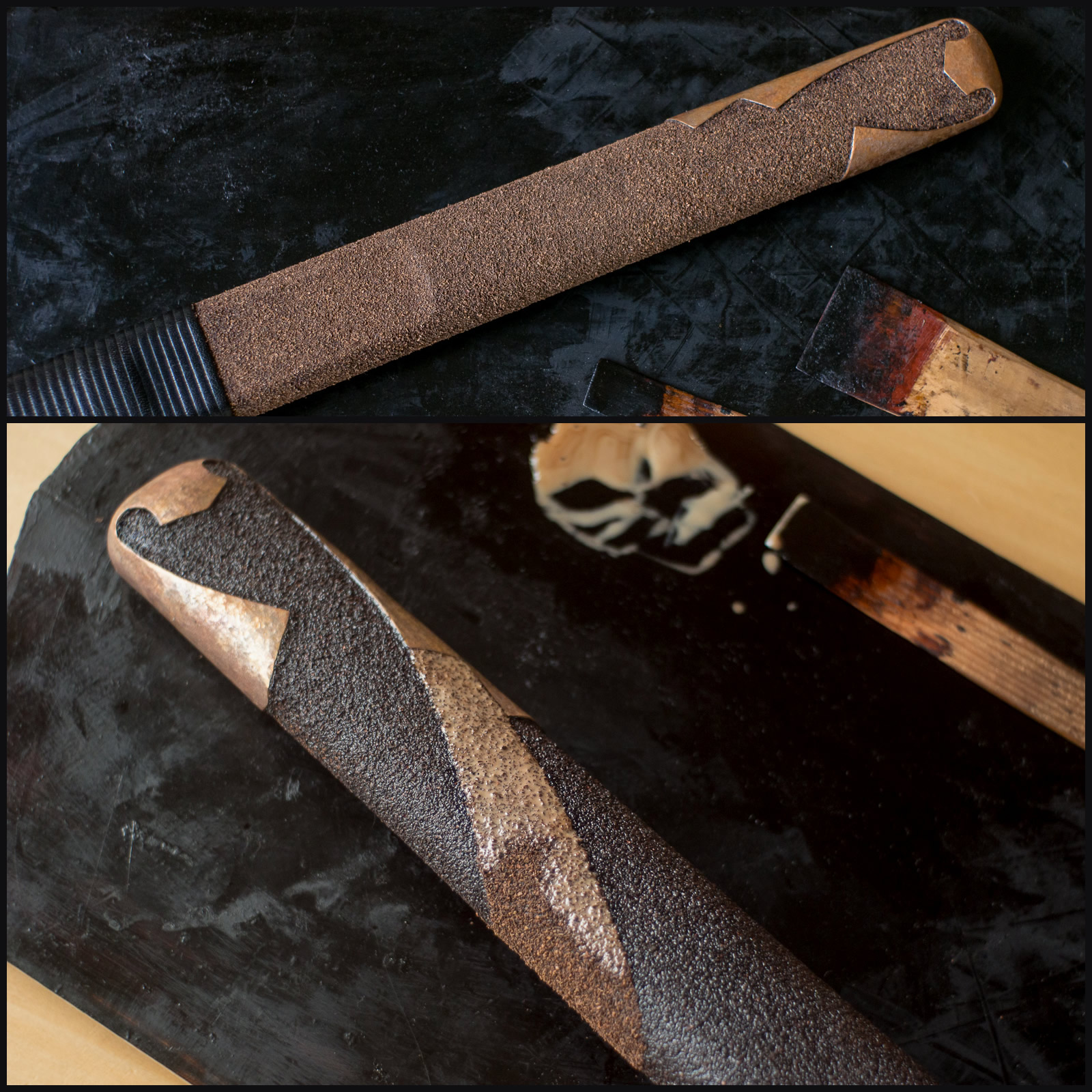
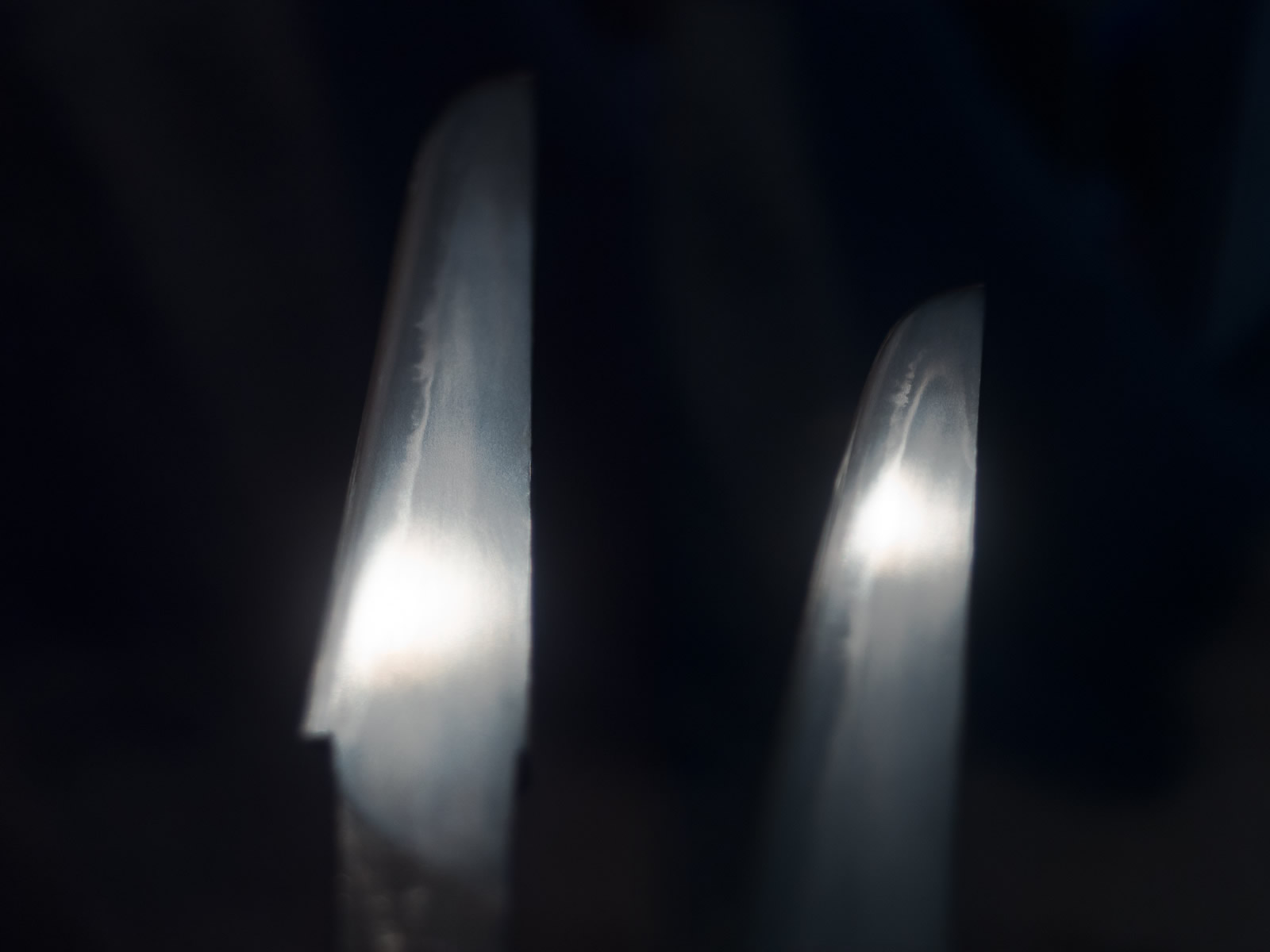
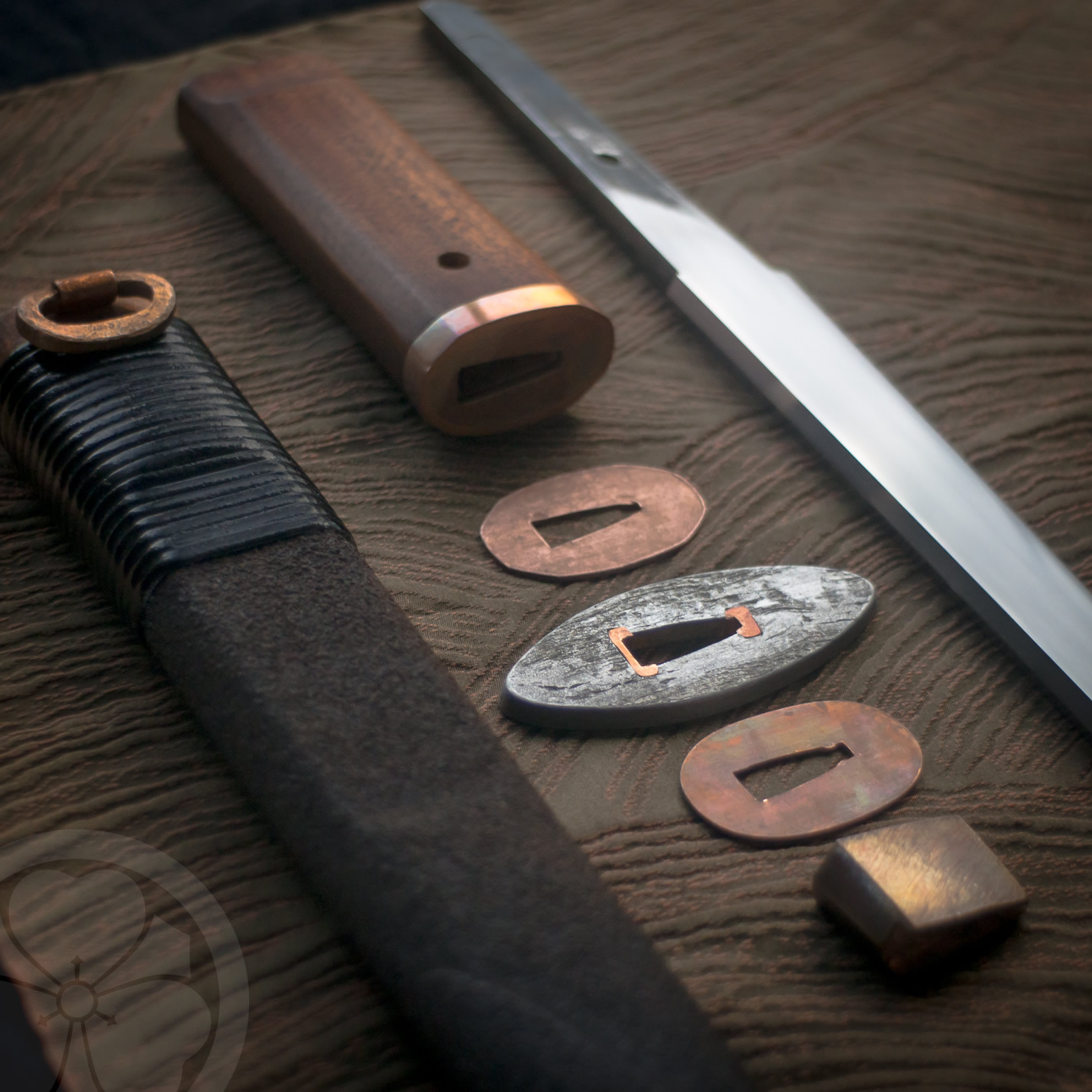
Read more about the making of this piece here: Touzai Tanto
Go back to the top of the page.
3.03022 cm
= 0.1 shaku(尺)
= 1 sun(寸)
= 10 bu(分)
= 100 rin(厘)



